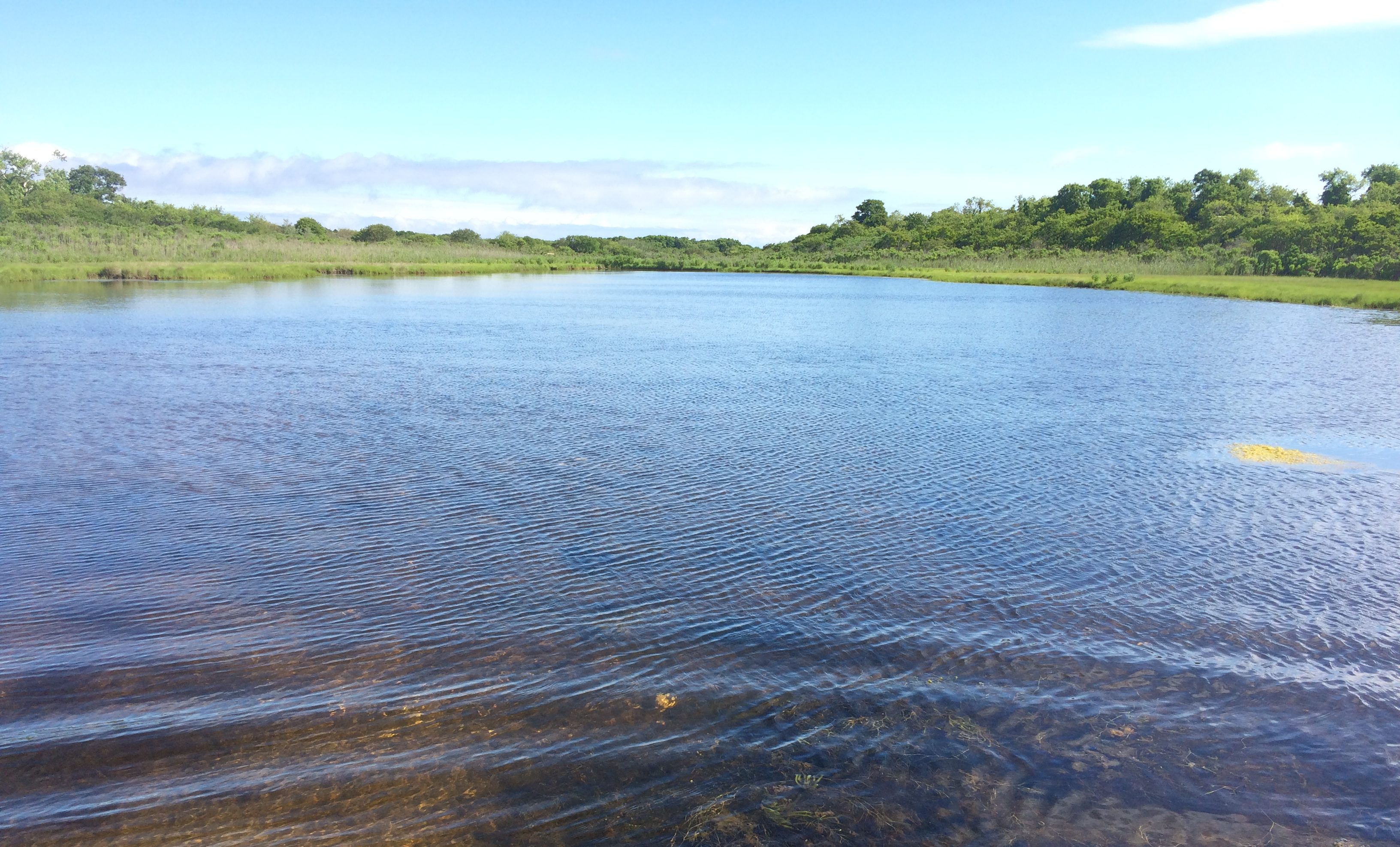Protecting & Restoring Long Island's Peconic Bays
Get the most up-to-date information on water quality and related public health alerts in the Peconic Estuary. Invasive Species Alerts, Shellfish Bed Closures, Bathing Beach Closures and Harmful Algal Bloom Updates.

Suffolk County Bureau of Marine Resources has routinely monitored the water quality of surface and marine waters in the Peconic Estuary since 1977. In 1993, with the formation of the Peconic Estuary Partnership (then Program), PEP and Suffolk County have partnered on this endeavor. On a monthly basis, 38 marine locations in main bays and peripheral embayments, and an additional 26 stream and point source sites in the Peconic Estuary are sampled from boats or from shore to assess status of the Peconic Estuary. These data are sufficient to document seasonal variability and trends in the waterbodies being measured.
All Suffolk County Department of Health Services Peconic Estuary Water Quality Data and Information is available here.
The Peconic Estuary Partnership in partnership with Suffolk County and the United States Geological Survey (USGS) to install three continuous monitoring stations in the Peconic Estuary, one located in Orient Point Harbor, one located on the South-side of Shelter Island, and one located at the mouth of the Peconic River under the 105 bridge in Riverhead. Together, these three monitoring systems provide temporal and spatial sampling of the water quality conditions within the estuary. Data is collected every 6 minutes.
Riverhead USGS Water Quality Monitoring Data
Orient Point USGS Water Quality Monitoring Data
Shelter Island USGS Water Quality Monitoring Data
From May – October, this page provides current information about Harmful Algal Blooms that have been detected within New York State waterbodies.
If you want to go find your own shellfish to eat, be sure to check out a few things before heading out to your favorite clamming spot. First, learn if the area where you want to go clamming is open to shellfish harvesting. Check the NYSDEC Shellfish Closures page. Also check the Temporary Shellfish Bed Closures page for any emergency closures.
For the most up to date temporary emergency closure information, please call the hotline at (631) 444-0480. A recorded message is available 24 hours a day, including weekends. During emergency closures, the recording will give the most up-to-date information about which areas are affected by the closures; descriptions of the closure lines will also be provided. For any other questions, please call the main shellfish office at (631) 444-0492 during normal business hours, Monday through Friday 8:30 AM until 4:45 PM.
This interactive map shows shellfish closures, conditional harvesting programs, shellfish harvest zones, aquaculture lease sites and water sampling locations.
The Suffolk County Department of Health Services (SCDHS) conducts a comprehensive bathing beach water quality monitoring program from May through September and updates are available in this map. A telephone Beach Hotline message (631-852-5822) is routinely updated to reflect any changes in beach status.
Long Island Groundwater Quality Map
The WaterTraq program is the first of its kind in New York state. It allows water suppliers, health officials, industry professionals and the public to research contamination by location, compound, depth of wells and other criteria. WaterTraq blends interactive maps with data from Excel to give a picture of water quality on Long Island. Users can search for levels of nitrates, iron, volatile organic chemicals, or other compounds and set limits, such as at or below safe drinking water standards. They also can overlay topography, boundaries and contours to show the depth to groundwater.
Click here for the latest Long Island Invasive Species Alerts. These are invasive species that have been detected in low abundance in this area – be on the lookout! If you find an unusual or harmful plant report them to the Long Island Invasive Species Management Area (LIISMA) or iMAP Invasives. These are in low abundance and are managed for eradication in LIISMA.
The Youth Outreach Director for the Friends of Atwater in California, reached out to the PEP Program office to let us know about their experience using our website! Here’s what she had to say about it:
“I wanted to send some positive feedback- I was teaching an environmental science lesson to some elementary students the other day, and when they were doing a webquest about water quality they ended up on the PEP page here. They thought I should let you know that we were using it as a resource, and found some great information so thank you =)
They also decided it would be nice of us to return the favor, so I had them pick out another educational page for us to share with you! “Clean Your Boat: Learn about Invasive Species”
It’s great for kids & students- we learned a lot from it, so they thought it’d be a helpful link for you to add to the PEP water quality page they found… would you be able to? They’d be so proud and I’d love to show them their suggestion =) I could show them tomorrow afternoon at our meeting! Thanks so much again and stay safe!!
Shana Mendelson
Sign up for News, Events and Information straight to your inbox.
